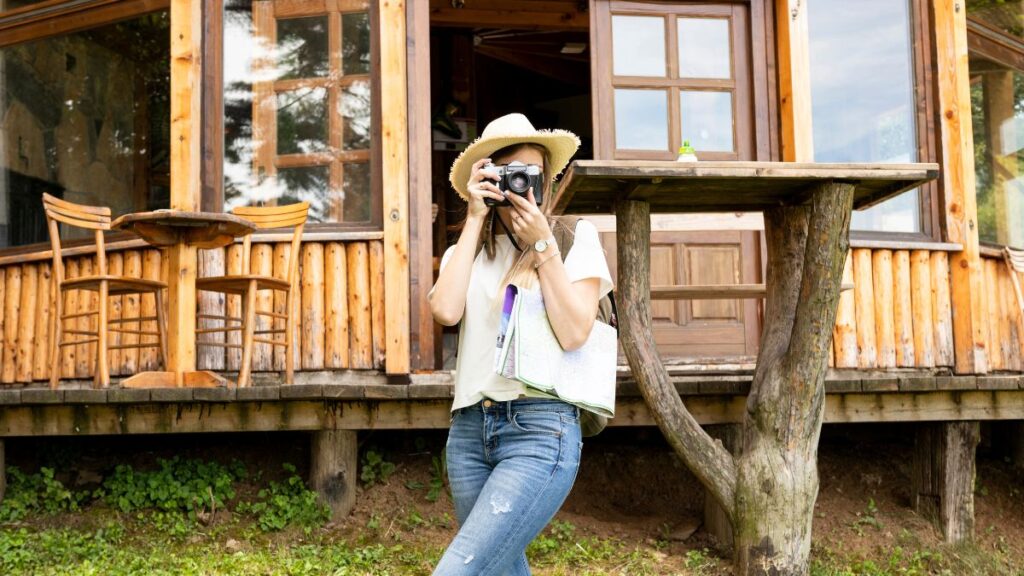A Brief History of Log Homes
The legacy of log homes is woven deep into the history of shelter and craftsmanship. Historians trace the origins of these structures to Neolithic Europe, where communities discovered the practical benefits of timber construction. Over centuries, techniques were refined and adapted—immigrants later brought these skills to North America, giving rise to the iconic frontier cabins that defined early settlement life.
Today, the spirit of those pioneers is alive and well in modern log homes. These buildings are much more than a nod to the past. Construction teams with expertise, such as Frontier Log Homes, continue to elevate log structures with cutting-edge techniques and meticulous attention to detail. Timber remains both the heart and the framework of these homes, forming a bridge between ancestral wisdom and contemporary comfort. From remote woods to sophisticated resort communities, handcrafted log homes reflect enduring values—resilience, sustainability, and a love for nature—that never go out of style.
Eco-Friendly Advantages in Modern Design
Environmental considerations are among the strongest arguments in favor of log homes. Unlike many conventional construction materials that require intensive manufacturing and generate high emissions, logs are renewable and sequester carbon. When sourced responsibly, the timber used in these homes comes from forests managed for regeneration, ensuring that every tree harvested is replaced by several more.
Builders increasingly look for ways to keep their environmental impact low throughout the building process. This means prioritizing local wood, reducing transportation emissions, and repurposing scrap material for other uses on the property. According to the U.S. Environmental Protection Agency, initiatives like green building certification and using natural, non-toxic finishes help create healthier homes for both occupants and the environment. As sustainability continues to gain traction, the ecological footprint of log homes often compares favorably with or outperforms other housing styles.
Energy Efficiency: Dispelling the Myths
It’s easy to assume that beautiful log homes, with their rustic exteriors and wooden walls, might struggle with modern demands for efficiency. Yet this belief is largely outdated. Advances in log home construction have dramatically improved a log home’s performance. Builders now utilize specially designed milled logs that fit together so tightly they eliminate drafts and air leaks, dramatically reducing unwanted heat loss.
There’s also science behind the logs: wood acts as a natural thermal mass, moderating indoor temperatures and reducing reliance on mechanical heating or cooling. By leveraging these natural insulating properties and combining them with modern ventilation, efficient windows, and superior roofing, homeowners are often surprised that log homes can outperform traditional dwellings regarding monthly utility costs. These savings become especially significant over the years, making energy efficiency a key benefit rather than a drawback.
Why Living in a Log Home Feels Good
People often describe walking into a log home as instantly soothing. There’s more to this feeling than nostalgia. Environmental researchers consistently find that natural building materials, like untreated wood, have measurable positive effects on mood and well-being. These effects are multiplied in log homes, where almost every surface radiates warmth and tactile appeal.
The colors and textures of wood can help ground daily routines, reduce anxiety, and foster creativity—a phenomenon often referred to as “biophilic design.” Whether it’s curling up with a book in a timber-wrapped corner or hosting friends around a crackling fireplace, the atmosphere in a log home feels distinctly nurturing. Those who live in log homes often cite the home’s uncluttered beauty and inviting ambiance as significant factors in choosing this type of dwelling, turning ordinary days into restorative experiences and making special occasions even more memorable.
Customization: The Endless Design Potential
When it comes to design, log homes are works of art in their own right, and there are almost endless ways to incorporate personal style and function into the equation. Homeowners can start with a classic single-level cabin and expand to multi-story estate homes or creatively combine rustic frameworks with sleek, contemporary interiors.
- Embrace open-concept living rooms with panoramic windows.
- Blend natural log elements with modern glass, steel, and stone materials.
- Integrate custom details—think carved railings, built-in shelving, or dramatic lofts—that celebrate each home’s uniqueness.
Technology has a place too; many log homes are now wired for smart home automation, high-speed connectivity, and state-of-the-art appliances. The emphasis on custom floor plans and unique architectural details means log homes never need to feel cookie-cutter. Instead, they become a tailored expression of their owner’s tastes, needs, and vision for daily life.
Maintenance That Protects Value and Longevity
A log home’s visual appeal and structural soundness rely on proactive maintenance. Regular upkeep—such as cleaning gutters and directing water away from the foundation—defends against weather-related wear. Every few years, logs should be stained or sealed, rejuvenating the wood’s gorgeous color and acting as a protective barrier against insects and moisture.
Homeowners are encouraged to inspect the caulking and chinking, seeking out tiny gaps that can be easily addressed before the elements arrive. These guidelines, as discussed by HGTV’s maintenance guide, can extend the life of a log structure for decades. With a maintenance routine that respects the unique properties of wood, log homes retain their value and charm, making them not just a purchase but an actual investment in the future.
Communities and Trends: The Log Home Lifestyle
Living in a log home is more than a private retreat—it’s also about joining an inclusive, growing community of owners and enthusiasts who share advice, inspiration, and support. Online groups and local meet-ups connect people passionate about the lifestyle, from first-time builders to veteran craftsmen.
Recent news and lifestyle reports have revealed evidence of rising interest in neighborhoods where log homes cluster together to foster a unique sense of place and belonging. Families, retirees, and remote workers gravitate toward log communities as places to reconnect with the outdoors, nurture sustainable values, and enjoy a slower, more intentional pace of life. These trends echo a nationwide move toward authenticity, wellness, and environmentally conscious living.
What’s Next for Log Home Living?
The future of log home living looks as sturdy and inviting as the homes themselves. Innovations in green building, new preservation methods, and the integration of innovative technologies are all making their way into the world of log construction. Builders are exploring advanced insulation options, solar integrations, and flexible layouts ready to accommodate families in every stage of life.
As the world continues to value sustainable building, wellness, and customization, log homes become a timeless yet contemporary choice. Whether set among soaring pines or standing proudly on a suburban street, these homes offer residents a restorative haven and a lifetime of memories, ensuring their appeal will last for decades, if not centuries, to come.







